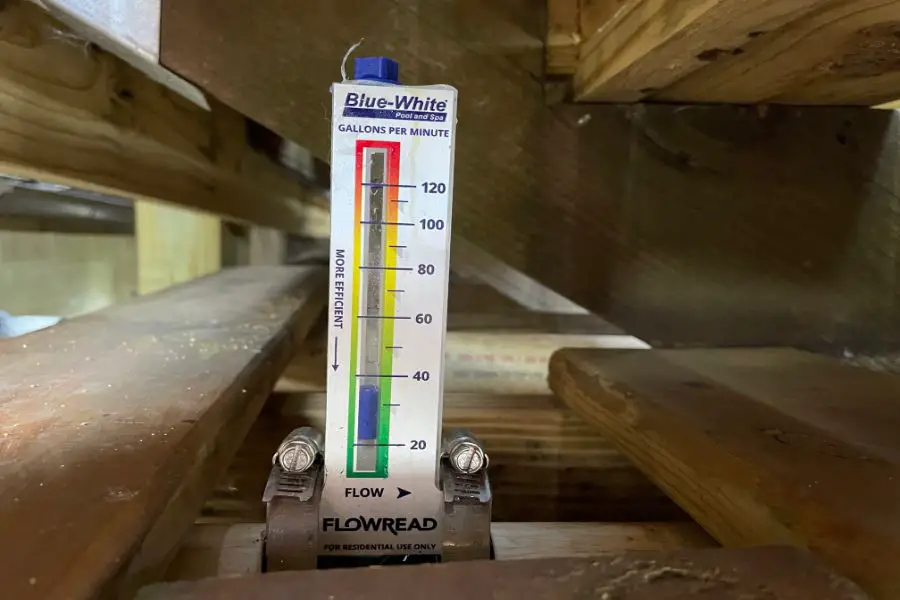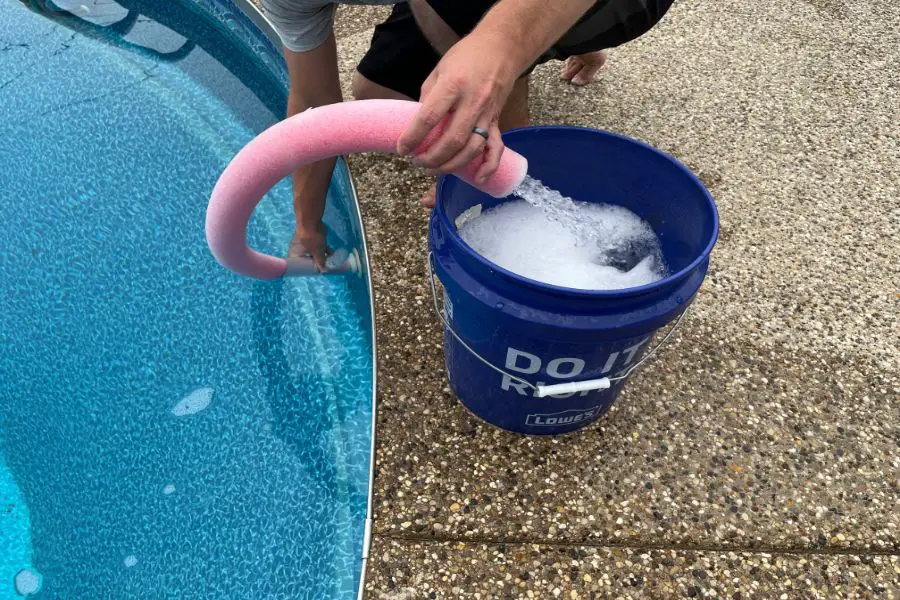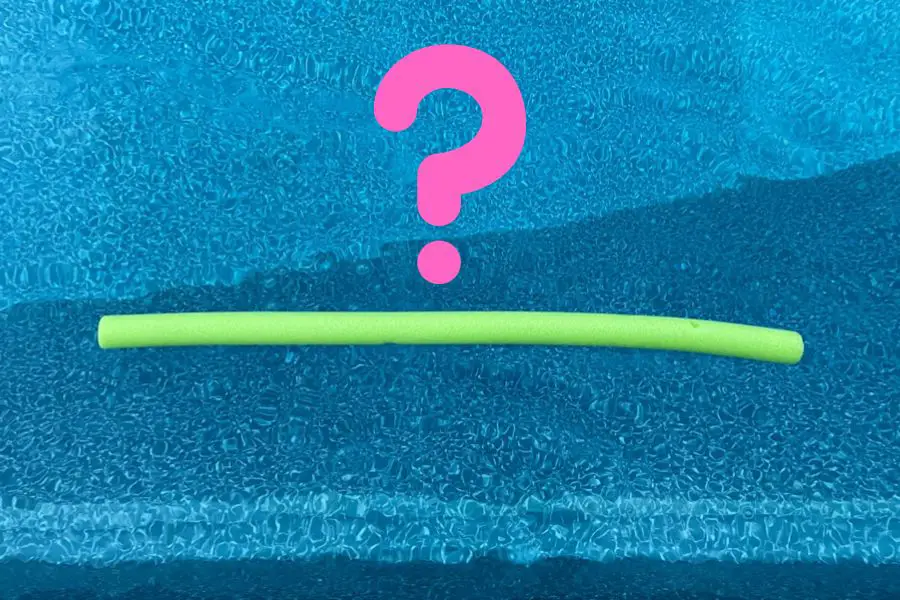Owning a pool is a convenient way to keep cool during the blistering summer heat. But, maintaining a clean pool throughout the season is key to actually being able to enjoy it.
When it comes to keeping the water nice and clear, the pump is arguably the “MVP” (most valuable piece) of the pool system.
The pump pulls water from the pool and sends it to the filter, chemical feeder, and heater before returning it back to the pool. Without the pump running, these other components are rendered useless.
Knowing the benefits that running the pool pump provides often raises the question, “Should I run the pool pump all the time?”
While it may be tempting to flip the pump on and let it run straight through the entire swim season, it may cause more harm than good. However, there are some instances where running the pool pump all the time is actually recommended.
This article will explore whether you should run your pool pump all the time, and methods you can use to better determine how long it should run. We’ll even look at a simple hack using a pool noodle that can help you figure out how long you should run your pool pump!
Reasons Not to Run the Pool Pump All the Time
While running the pool pump will improve the quality of the water, there are some important reasons as to why you may not want to run it all the time.
1 – Cost

Running a pool pump can be the single largest consumption of electricity in your house, potentially even more than central A/C!
In most cases, running the pump all the time will provide minimal additional benefit compared to the cost.
Running your pump 24/7 for 365 days a year could cost anywhere between $1,100 to $5,000 annually! The true cost of running your pump will depend on the size of your pump along with the electricity rate for your area.
Size of Pump
Pool pumps and their motors are sized based on the design of your overall pool system. This includes the volume of your pool, along with the plumbing arrangement.
The size of the pump motor is measured in horsepower (hp), which correlates to the energy usage or amperage draw.
Pool pumps often range in sizes of ½ to 3 hp, which correlates as 1.1 to 3.9 kWh, respectively.
The nameplate of your pump motor should indicate its amperage from which you can calculate the hourly energy consumption in kWh:

Electricity Rate
Electricity costs can vary widely across the U.S., ranging anywhere from 10 to 23 cents/kWh, with an approximate average of 14.26 cents/kWh.
The electric rate can also vary greatly depending on whether the usage is occurring during on-peak or off-peak hours in the summer months, as governed by the utility supplier. In some cases, using electricity during on-peak hours (e.g., 2 to 7 pm) can cost 1.5x more than off-peak hours.
Running a standard 1 hp pump at an average cost of 14.26 cents/kWh, would cost $6.27 over a 24-hour period.
2 – Longevity of Pump
Generally, pool pumps will last 8 to 12 years. However, the longevity of the pump depends on several factors, including its usage.
Running a single-speed pump continuously everyday will decrease its lifespan. A single-speed pump is always running at full throttle, in which there are mechanical components that will fail over time –e.g., motor bearings, seal, etc.
3 – Environmental Impact
As mentioned, running a pool pump can become the largest energy consumer in your house.
While electricity is often considered “green” and environmentally friendly compared to gasoline, electricity is often derived from fossil fuels such as coal or natural gas.
Running the pump unnecessarily will not only hurt your wallet, but could also contribute to greenhouse gas emissions.
Reasons Why You Should Run the Pool Pump All the Time
So, we’ve just reviewed several reasons not to run the pool pump all the time that will apply to many pool owners. However, like most things in life, there are exceptions.
Here are a few instances as to why you should run the pool pump all the time:
1 – Variable Speed Pump
For pool owners that have a variable speed (VS) pump, the option to run 24/7 can definitely be kept on the table. As the name implies, a variable speed pump allows you to run it at differing speeds.
Running the VS pump at lower speeds allows you to run it longer each day while consuming 50-80% less energy compared to a single speed pump. It’s possible that you can actually continuously run the VS pump at a lower speed 24/7, and still use less energy than a single speed pump that runs 8 hours a day.
The inherent design of a VS pump along with its ability to run at a lower speed should also increase its longevity compared to a single-speed pump, even if running for longer periods of time.
2 – Water Quality Issues
At some point or another, most pool owners have experienced issues with their pool water. In some cases it may be an algae outbreak, in others it may be cloudiness caused by chemical imbalance.
While the ultimate resolution to the pool water issues may vary, oftentimes there’s a need to run the pump and filtration system continuously for 24 hours or more.
Running the pump non-stop will ensure circulation of any treatment chemical and will quicken the filtration of the water. It more than likely will help get you back in the water sooner than if you stuck to a normal pump run cycle.
Fortunately, once the water quality issue has been resolved, the pump’s run cycle can be returned to normal.
3 – Undersized Pump
In the unfortunate scenario that your pump is undersized for the pool, it may be difficult to achieve even a single turnover of the pool’s water per day. Without achieving a turnover of water, the pool will be more inclined to experience unwanted growth.
This scenario may force you into having to run the pump all the time in order to keep the water clean.
Ultimately though, if you find that your pump is undersized, it’ll probably be in your best interest to replace it with a larger one when possible.
How Long Should Your Pool Actually Pump Run?
You may have heard it before, just run the pump 8 hours a day and that’ll be good enough to keep the pool clean. But, this 8 hour rule-of-thumb does not work for all pools and could end up causing troubles down the road.
Determining how long your pool pump should run revolves around the turnover rate of the water. The turnover rate is the amount of time it takes to completely circulate all the water in the pool a single time.
You should aim for at least one turnover of water in the pool per day in order to ensure proper filtration and treatment. In other words, if it takes 10 hours to cycle the water completely, then you should plan to run the pump for at least 10 hours per day.
However, more than one turnover a day can help keep your pool even cleaner –it’ll just be at the expense of additional electrical usage.
There are various ways to calculate the pool turnover rate, but ultimately there are two pieces of information you need: Pool Volume and Pump Flow Rate.
The pool turnover rate calculation is very simple:

While calculating the turnover rate is straight forward, there’s some legwork in gathering the information for it. We’ll show you how!
How to Calculate Pool Volume
Pool volume is dependent on the shape and dimensions of the pool. The average size of a pool in the U.S. is 15 x 30 feet with an average depth of 5.5 feet –this calculates to be approximately 18,000 gallons for a rectangular pool.
The basic calculation for pool volume (gallons) is:

Where,

And,

Alternatively, there are online pool volume calculators that can crunch the numbers for you simply by plugging in the shape and size of your pool.
How to Measure Pool Pump Flow Rate
The pool pump flow rate indicates how much water is being circulated across a period of time. The flow rate is often expressed in gallons per minute (gpm) –i.e., the number of gallons that are being pumped to/from the pool every minute.
Determining your pool pump flow rate can be the more challenging piece of information to acquire when calculating the turnover rate. This is often why the 8-hour rule of thumb is used when determining how long to run the pump each day rather than actually determining the correct amount of time to run.
We’ll run through three different ways to measure your pool pump flow rate, so that you can more accurately determine just how long you should run the pump:
- Performance Curves
- Flow Meter
- Pool Noodle
1 – Use Pump Performance Curves
A performance curve can be used to determine how many gallons per minute the pump should be pushing out while factoring in resistance of the plumbing system. The performance curve can be found in your pump’s manual or by contacting the pump manufacturer.
In order to read the curve, you’ll need to know the model of your pump along with the total dynamic head (TDH), also referred to as feet of head. With these two pieces of information, you’ll be able to find the flow rate of your pump.
TDH refers to the resistance or friction of the pool’s entire plumbing system. A higher TDH indicates higher resistance, which will reduce the pump’s output.
The TDH includes the length of all the supply/return piping, along with how many bends or fittings are included. It also includes the resistance at the pool equipment such as the filter or heater, along with elevation differences between the equipment and pool.
Each of the plumbing elements results in a specific value for feet of head. For instance, 100 feet of 2” PVC piping has 15.2 feet of head, while a 90 degree 2” PVC fitting has a value of 8.7.
Once the feet of head for all elements is determined, they can be added together to acquire the overall TDH. You can then use it to read the pump curve.
As you can imagine, the TDH is not always easy to calculate especially when so much of the plumbing may be buried in the ground. However, TDH can be quickly measured through the use of gauges, as follows:
- Install a vacuum gauge on the suction side of the pump, and a pressure gauge on the discharge side of the pump.
- With the pump running, take readings from both the vacuum gauge and pressure gauge.
- Multiply the vacuum gauge reading by 1.13, and multiply the pressure gauge reading by 2.31.
- Add the calculated values together to get the TDH!
2 – Use a Flow Meter

Another way to measure your pool pump flow rate is with a flow meter. A flow meter can be installed on your existing plumbing configuration and will provide you with the gallons per minute that are flowing through the pipe.
Many pool flow meters consist of a small ball that floats in a graduated tube. The location of the ball next to the respective marking indicates the flow rate.
Some of the more sophisticated flow meters are electronic, but these will be more costly than the ball and tube style.
Before purchasing the flow meter, it’s important to review the installation instructions to ensure your piping arrangement can meet the manufacturer’s requirements.
Some flow meters may require up to 12 inches of straight piping before and after the meter in order to provide accurate measurement –this may not always be practical depending on your configuration.
You’ll also want to review the range of flow that the meter can measure before purchase. Small pools likely have smaller pumps that may only output 15 gpm, while larger pools can approach 100 gpm or more. Not all flow meters will cover these ranges.
Most pool flow meters require that a small hole be drilled into the pipe, in which the meter will include a gasket to prevent leakage once installed. During winterization, you may need to consider removing the flow meter to protect it from the elements.
3 – Use a Pool Noodle!

A unique option to help you calculate the pool’s turnover rate is the ever-so-versatile pool noodle. Yes, the noodle that is often used as more than just a pool toy can also help you measure the flow rate.
This is an option I thought of as I was trying to balance the flow rate of my DIY solar heater. The piping coming out of my filter did not have enough room to use a standard flow meter, which spurred this creativity.
This pool noodle method can be just as accurate as the other methods, with much less effort and cost. The pool noodle will essentially extend your pool’s return jet so that you can directly measure the flow rate of water into a bucket.
Many pool jets have a diameter of 1/2″ to 3/4″ which is nearly identical to the inner diameter of many pool noodles. This makes the noodle a perfect fit for this application.
Simply follow these steps to use the pool noodle method to measure your pump’s flow rate:
Step 1: Gather Materials
- Pool Noodle (approximately 5 feet or so)
- 5-gallon bucket
- Stopwatch (or phone app)
- Pencil and Paper
Step 2: Setup for the Test
Move your materials to the pool deck near a return jet.
Step 3: Start Test
Press one end of the pool noodle tightly against a return jet. You should see water flowing out the other end. Feel around where the noodle and jet connect to ensure water isn’t leaking by.
Once the noodle is in place with the jet, start the stopwatch. Prepare to position the other end of the noodle into the bucket to start collecting water.
As you start catching water in the bucket, review the exact time on the stopwatch, as you’ll need to subtract this from the final time.
Step 4: End Test
Once the 5-gallon bucket is full of water, note the time on the stopwatch. Subtract the start time from the end time to determine how long it took to fill 5 gallons, and record this duration on your paper.
Step 5: Repeat for Remaining Jets
Repeat steps 3 and 4 for all remaining jets in the pool. You may notice that jets further from the pump take longer to fill the bucket, which means they have less flow rate due to the longer run of piping.
Step 6: Run the Numbers
Once you have durations for each of your pool jets, you can calculate the overall flow rate from the pump into the pool:

For instance, if it took 27 seconds to fill the 5-gallon bucket at Jet #1, the calculated flow rate at this location is 11 gpm.
Perform this calculation for all of your pool jets. You can then add up the gpm value from each of the jets to determine the overall flow rate from your pump.
Once you have this information, you can easily calculate your pool’s turnover rate (Pool Volume divided by Flow Rate). This will tell you exactly how long you need to run your pump to achieve the minimum one turnover per day.
FAQ
Can I Run My Pool Pump Every Other Day?
Most of us like to cut costs where we can, so it’s not uncommon for pool owners to wonder whether they can get by running the pump every other day. In some cases, if the pool is staying crystal clear it may seem like a legit consideration to skip every other day.
Unfortunately, not running your pool pump daily can lead to water quality issues in very short order.
The circulation that the pump provides will help you keep your chemical balance and will help keep debris filtered out. When a body of water sits still for an extended period of time, it’ll be more prone to undesired growth of bacteria and algae.
In fact, with the right water conditions an algae bloom could form in the matter of hours. By not running the pump for 24 hours, you’re increasing the potential of a surprise algae outbreak.
Even if you throw in some chlorine on the days where the pump is not running, it will be unable to circulate throughout the water rendering it much less effective.
What is the Best Time to Run the Pool Pump in the Summer?
During summer it’s best to run the pool pump during the day, particularly at the times when it’s likely to be warmest such as the afternoon.
Running the pump during the heat of the day will help keep the water surface free of debris at times when swimmers are most likely. It will also help prevent sudden algae attacks that thrive in the sun.
Your chlorine may also last longer if you run the pump during daylight hours, as the sun breaks down chlorine fast if the water is sitting still.
The primary downfall with running the pump during the afternoon hours is potential higher energy costs. Some utility providers will charge a higher electric rate at peak hours, which are often set during the afternoon.
If you have a variable speed pump, you can get the best of both worlds by running the pump in the afternoon at a slower speed. This will help keep the pool clean while also cutting down on electric cost!
Final Takeaway
Running the pool pump all the time is often unnecessary, and potentially even wasteful. However, at a minimum you should determine your system’s turnover rate in order to establish the appropriate runtime.
There are several methods in calculating your pool’s turnover rate. These methods can range from the use of pump curves to direct measurements with a pool noodle.
Figuring out how long to run your pump will help keep the water sparkling while reducing burden on the wallet.
If you enjoy trying to keep the pool comfortable without spending a fortune, check out how to make a DIY solar cover for less than $10!
Happy (Crystal Clear) Swimming!
Husband and father of three (actually, four if you include the pool). I’m an avid DIY-er and weekend warrior that enjoys taking up new projects around the house to help us maximize leisure right at home. I enjoy researching and sharing various tips, tricks and knowledge to help others make their home an oasis.

